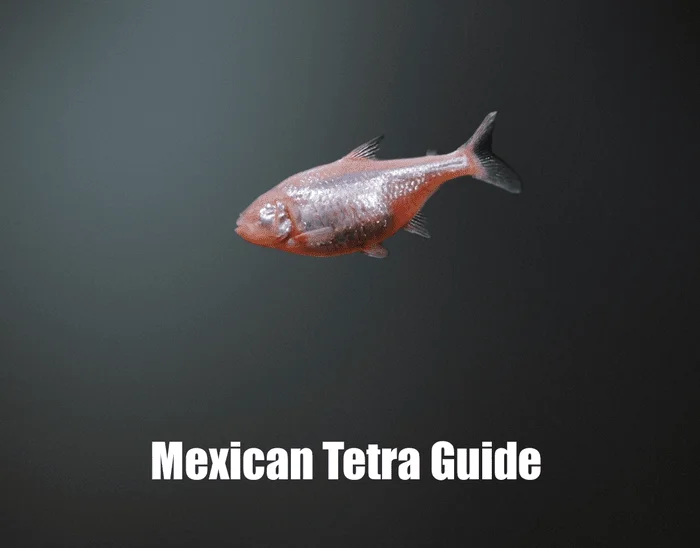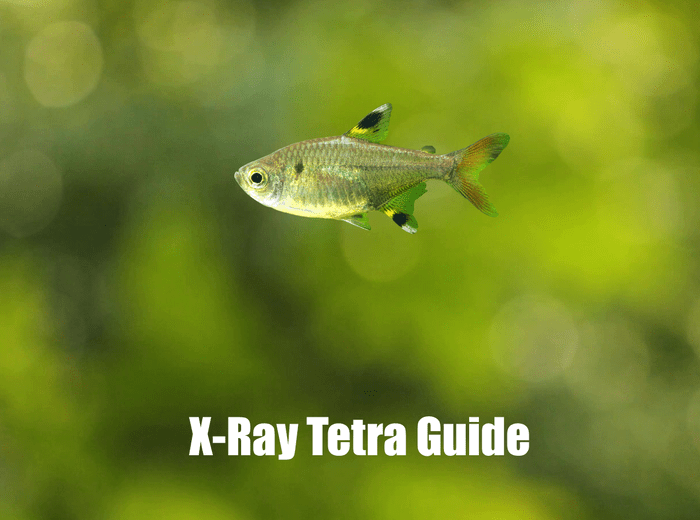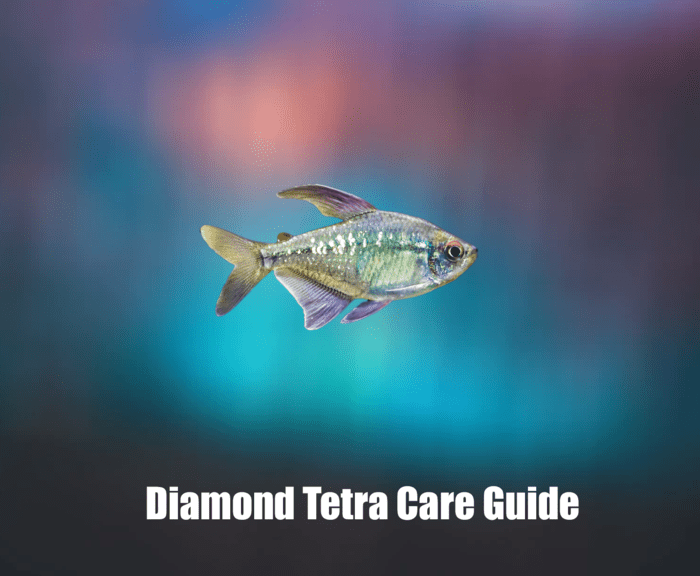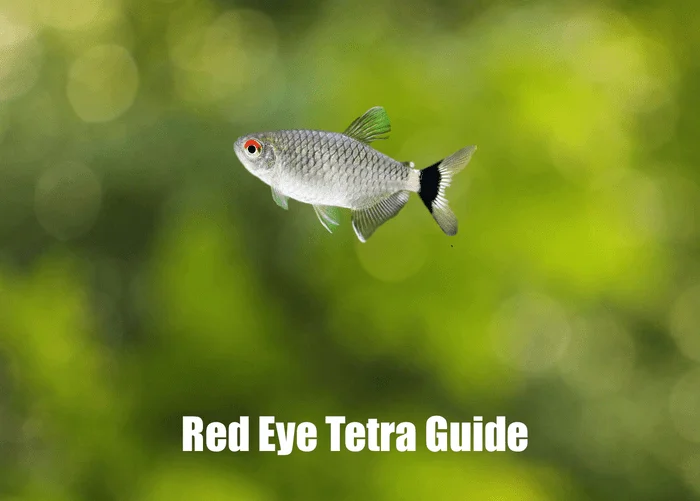Complete Care Guide for Hummingbird Tetra: Creating a Unique Aquarium
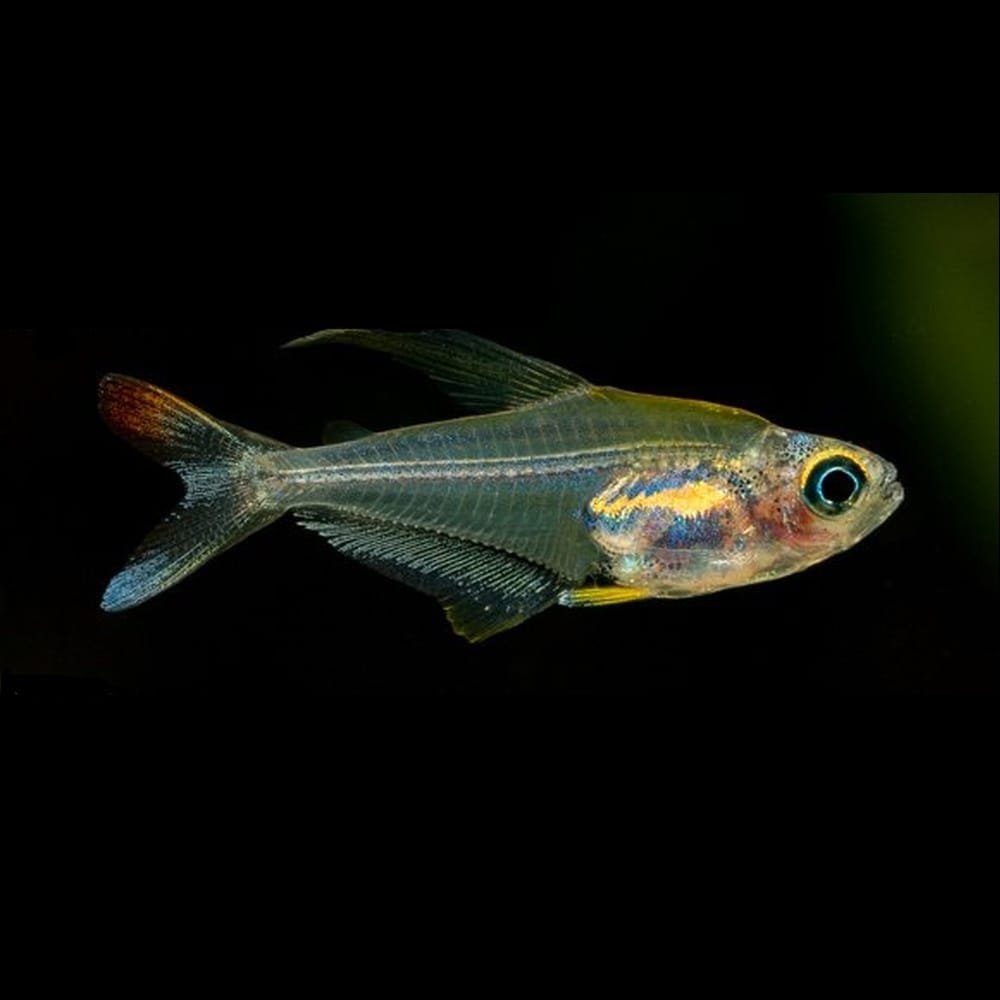
Introduction
Considering Hummingbird Tetra for your aquarium or looking to refine their care? This guide is for aquarists of all levels. The Hummingbird Tetra—scientific name Trochilocharax ornatus—is an ultra-tiny Peruvian characin (0.67–0.79 inches adult size) and the sole member of its genus, renowned for its delicate, iridescent look and lively mid-to-upper-level schooling behavior. Though uncommon in the hobby, they thrive in stable, well-planted nano setups with gentle flow and slightly warm, acidic water. Below, you’ll find everything you need to help your Hummingbird Tetras flourish.
Understanding Hummingbird Tetra
Origin and Characteristics
Hummingbird Tetra hail from shallow, slow-moving forest streams in Peru—tannin-stained blackwaters and clearwaters around the Iquitos region, often over sand and leaf litter with very soft, acidic conditions. Adults stay truly tiny at about 0.67–0.79 inches (Standard length), making them one of the smallest characins in the hobby. Their bodies are glassy-translucent with a subtle iridescent sheen; males are typically a bit larger and more vivid, often showing an elongated dorsal fin and brighter ventral fins (some sources note a small “pouch” scale at the caudal peduncle). In groups, they hover and flit through mid-water like their namesake, creating shimmering movement in well-planted nano aquaria.
Males are the showstoppers—typically a bit larger with an elongated dorsal fin and brighter ventral fins, and they’ll “flash” and posture more intensely when displaying to females. While detailed spawning data are limited, hobby reports describe energetic courtship chases and scatter-spawning over fine plants or moss. Despite their tiny size, Hummingbird Tetras are gentle, ignoring tankmates and plants. They’re surprisingly adaptable when kept in stable, clean water, and in groups they hover and dart through the mid–upper layers in loose shoals—adding constant, delicate motion to a nano aquascape.
Behavior and Tank Mates
Hummingbird Tetra are gentle, micro-schooling characins and really shine in groups—aim for at least 8–10 to reduce shyness and bring out natural hovering, darting displays. They’re best in peaceful nano community setups with similarly tiny, calm species. Given their minute size, avoid boisterous or nippy fish.
- Ember Tetra (Hyphessobrycon amandae) – calm, similarly sized, great color contrast.
- Chili Rasbora (Boraras brigittae) – ultra-peaceful micro-schooler for soft, warm water.
- Pygmy Corydoras (Corydoras pygmaeus) – gentle bottom-dwellers that won’t outcompete them.
- Otocinclus spp. – small algae grazers that keep to themselves.
- Celestial Pearl Danio (Danio margaritatus) – timid, compatible nano fish when kept in a quiet tank.
Remember, while choosing tank mates, consider factors like water parameters, size, temperament, and dietary needs to ensure a harmonious aquarium. It’s important to choose tank mates that are peaceful and won’t outcompete the Hummingbird Tetra for food, always introduce new fish gradually and monitor their interactions to ensure a peaceful environment. 🐠
Setting Up the Perfect Tank
Tank Size and Conditions
A 20-gallon tank or larger is recommended for a school of Hummingbird Tetra but they will benefit from some more swimming room. These Tetra thrive in specific water conditions that mimic their natural habitat. Additionally, maintaining ideal water parameters is the key to ensuring their health and well-being in a home aquarium. Here’s a breakdown of their ideal water conditions:
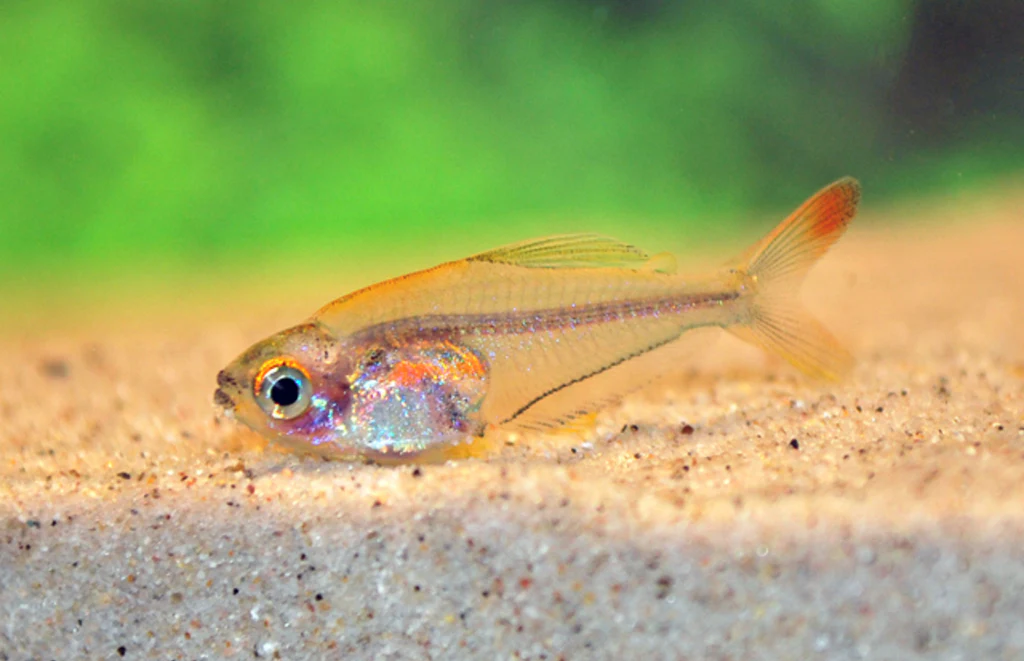
- Temperature: 75–82 °F (24–28 °C). This tropical temperature range helps in promoting their natural behavior and vibrant coloration.
- pH Level: 5.0–6.8 for a blackwater “biotope” feel; they can adapt up toward neutral if acclimated slowly.
- Water Hardness: 5-16 dGH, indicating they prefer soft water
- Water Quality: Like most fish, Hummingbird Tetra require clean and well-oxygenated water. Regular water changes (about 25% per week) are recommended to maintain good water quality. It’s crucial to remove any chlorine or chloramine from tap water before adding it to the tank.
- Nitrate Levels: Keeping nitrate levels low is important, as high levels can be harmful. Aim to keep nitrates below 20 ppm.
- Ammonia and Nitrite Levels: Both ammonia and nitrite should always be at 0 ppm. Even small amounts of these can be toxic to fish.
It’s important to use a reliable aquarium test kit to regularly monitor these water parameters. Sudden changes in water conditions can stress or harm your fish, so any adjustments should be made gradually. Maintaining stable water conditions is key to the health and longevity of your Hummingbird Tetra. 🌊
Lighting and Decor
- Moderate Lighting: Mimic their natural, slightly shaded habitat with moderate lighting.
- Day/Night Cycle: Maintain a regular cycle, typically around 10-12 hours of light per day.
- Plants: Dense vegetation, including tall and floating plants, to provide hiding spaces and a natural environment.
- Substrate: A dark-colored substrate can enhance the natural colors of the fish.
- Hiding Places: Include driftwood, rocks, and caves for shelter.
- Open Swimming Space: Ensure ample free-swimming space to accommodate their active swimming behavior.
Diet and Nutrition
Feeding Habits
Hummingbird Tetra are micro-omnivores with tiny mouths and quick metabolisms, so think small, frequent, and varied. Offer finely crushed micro flake or nano crumble, sub-millimeter micro-pellets if they’ll take them, and suspended foods like cyclops, sifted daphnia, very fine micro bloodworms, and powdered plankton blends used sparingly. Live and frozen baby brine shrimp are ideal; rinse before feeding. Other useful live foods include moina, microworms, walter or grindal worms (small strains), and vinegar eels for very young or shy fish.
They’ll accept a little plant matter, especially if you use spirulina- or chlorella-fortified flakes or gut-load baby brine with algae paste. You can occasionally work in a speck of blanched spinach or pea mashed into a soft gel food, but keep vegetable portions modest.
Feeding Schedule
Feed two to three tiny meals per day—only what they finish in about a minute—to match their small stomachs and limit waste. Deliver food into the mid-water column with a pipette or turkey baster so it doesn’t sink past them. Rotate offerings to cover protein, fats, and micronutrients, and add a vitamin soak once or twice a week.
For conditioning and richer color, increase live foods for a week or two. Avoid oversized pellets, heavy meaty mixes, and overfeeding; pristine water and tiny portions are as important as the menu.
Frequently Asked Questions
A Hummingbird Tetra can grow to 0.67–0.79 inches in length
In a well-planted, stable 20-gallon, you can comfortably keep about 18–22 Hummingbird Tetras.
The best water temperature for Hummingbird Tetra is 75–82 °F (24–28 °C).
No—they’re very peaceful and often timid. They do best in calm community tanks.
Health and Wellness
Breeding Tips
Breeding Hummingbird Tetra can be a rewarding experience, but it requires preparation and an understanding of their behavior. Here are tips to help you succeed:
- Breeding Tank: Set up a separate tank with very soft, slightly acidic water (pH ~5.5–6.5) and a temperature of about 76–80°F (24–27°C). Keep lighting dim and provide fine-leaved plants, moss, or spawning mops. A leaf-litter base or mesh “egg trap” helps protect scattered eggs.
- Identifying and Introducing Breeding Pairs: Choose healthy, mature fish. Males are typically a touch larger with an elongated dorsal and brighter ventral fins. Introduce one male to one or two well-fed females in the evening.
- Condition the Breeders: Offer small live and frozen foods (baby brine shrimp, moina, microworms) for 1–2 weeks to trigger spawning readiness.
- Spawning Process: Spawning usually happens at first light. The pair scatters eggs among plants or mops with subtle courtship chases.
- Post-Spawning Care: Remove adults immediately after spawning to prevent egg predation. At warm temperatures, eggs typically hatch in about 24–48 hours.
- Rearing Fry: Start with infusoria or commercial liquid fry foods until they’re free-swimming, then transition to freshly hatched baby brine shrimp and microworms. Keep light low, cover filter intakes with sponge, and perform tiny, frequent water changes to maintain pristine conditions.
Remember, patience is key. It may take a few attempts to dial in water chemistry and timing. Stable, gentle conditions—and very clean water—make the biggest difference.
Common Health Concerns
Hummingbird Tetras are hardy for their size, but—like most small characins—they’re susceptible to ich (white spot), velvet, and occasional fungal or bacterial flare-ups if water quality slips. Their tiny bodies and fast metabolisms make them sensitive to sudden swings, so prevention is everything: keep the tank clean and mature, run gentle, well-oxygenated filtration, and perform small, frequent water changes. Aim for soft, slightly acidic water with stable temperature, and feed a varied, finely sized diet to support immunity.
Because they come from quiet, tannin-rich habitats, adding botanicals (leaf litter, driftwood) can help reduce stress. Quarantine all new fish, plants, and hardscape, and acclimate slowly. Watch for early warning signs—clamped fins, flashing, labored breathing, loss of color, hollow bellies—and act promptly. Medicate in a separate hospital tank when possible, follow dosing conservatively for micro fish, and avoid abrupt salinity or temperature changes. With stable parameters, pristine water, and calm tankmates, Hummingbird Tetras show their best color and constant, delicate activity.
Life Expectancy
With proper care, Hummingbird Tetras typically live 2–4 years, and exceptional, steady conditions can see some reach around 5 years. Their longevity hinges on stable soft, slightly acidic water, gentle filtration, a varied micro-diet, and consistent small water changes—regular monitoring and prompt corrections keep them thriving.
Hummingbird Tetra Wrap Up
In conclusion, Hummingbird Tetras bring delicate sparkle and constant, graceful motion to a planted nano aquarium. By following the care guidelines in this guide—soft, slightly acidic water, gentle flow, dense cover, and tiny varied foods—you can create a stable environment tailored to their needs. Their translucent sheen and hovering, midwater schooling add subtle beauty while complementing a peaceful community. Remember: consistency is everything. Maintain steady parameters, feed appropriately small portions, and keep up with light, frequent maintenance. Do that, and your Hummingbird Tetras will thrive and enchant your aquarium with their quiet, lively charm.
Share Your Tetra Experiences
Do you have any stories or tips about your Tetra tank? Share them in the comments below!
Help Others Discover This Guide
Navigate the Tetra in your tank with confidence. This guide is your pathway to creating a vibrant and healthy aquatic showcase. Enjoy the dazzling colors and lively nature of these unique fish!

